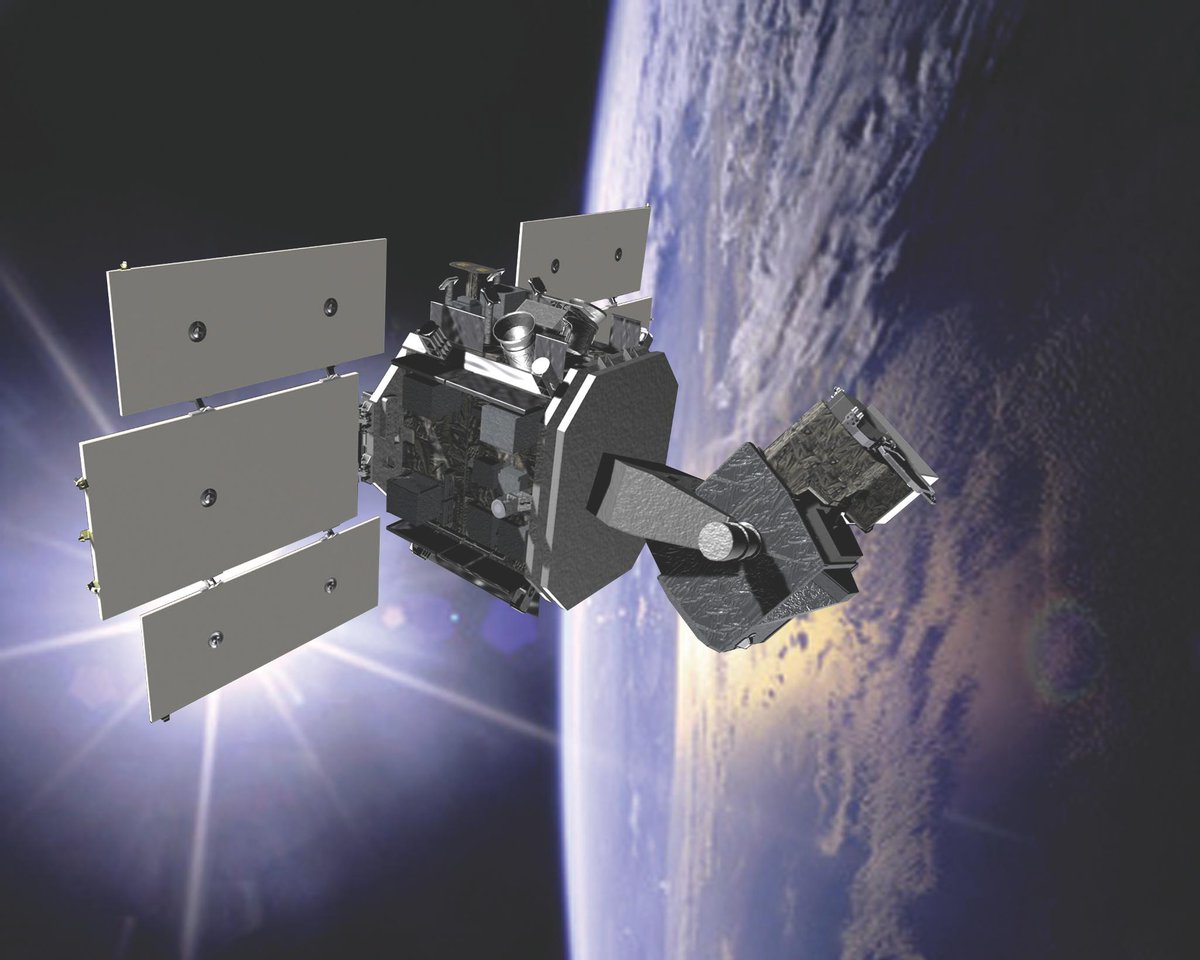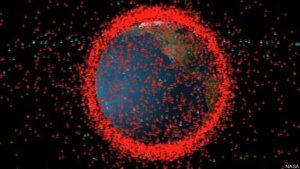
Space Command wants more space-based telescopes, such as the Space-Based Surveillance System (SSBS), to eye the heavens.
MAUI: Space Command wants much more and more timely observational data, including from industry, to detect, track, characterize and determine what space objects are actually doing in near-real time — a mission set now dubbed space domain awareness, or SDA — according to military and industry experts.
“We need data in seconds, not in minutes, not in hours, not in days. The more things we can get machine-to-machine, and get humans out of the loop, the better,” said Col. Scott Brodeur, director of Space Command’s National Space Defense Center (NSDC) and director of operations at the Joint Task Force-Space Defense (JTF-SD), on Thursday.
But a key obstacle to the ability of the Space Command to use commercial data on the whereabouts of spacecraft and dangerous debris is the lack of a DoD agreed standard for formatting how observational data is reported.
“The government has not decided what we want our format to be. But when we do decide, in short order, I need y’all to be all in on getting onto that format,” Brodeur told the audience at the annual Advanced Maui Optical and Space Surveillance Technologies (AMOS) conference on space observation here. “And so we know that we have the action, but once that happens, we need you to be all in to make that work. And that’s going to help us tremendously to get to the next level where we need to be for SDA.”
The NSDC is the organization at Space Command that pulls together sensor data and analysis from the National Reconnaissance Office (NRO) and the military on space activities of other nations. It falls under the JTF-SD, which is responsible for Space Command’s mission to protect and defend US space assets, also working with NRO and other Intelligence Community partners.
The NSDC has three “focus areas,” Brodeur said: SDA, providing “indications and warnings” regarding threats, and “space security command and control.”
He explained that the NSDC is creating “an integrated sensor support plan” that will bring together observational data from the DoD radar and telescopes comprising the Space Surveillance Network (SSN) with data from “non-traditional sensors and commercial sensors” at the JTF-SD Commercial Office, based at the Catalyst Campus for Technology and Innovation in Colorado Springs. Also being incorporated into the plan are allied sensors, and those used by the IC and the other services. All that data then will be “fused in one place at the right classification level,” he said.
Brodeur noted JTF-SD in recent months has “grown” its relationship with commercial, allied and academic partners. “That’s now, more than ever, coming together at Joint Task Force-Space Defense,” he said.
The data, in turn, is used by NSDC to provide warnings of possible threats — whether deliberate threats from adversaries or non-deliberate threats such as close approaches of active satellites with debris — to Space Command, other Combatant Commands, allied forces, and commercial partners, Brodeur said.
Industry officials and lawmakers have been frustrated by what they see as a lack of movement in Space Force and Space Command (SPACECOM) capabilities to ingest commercial data and analysis, despite assertions by military leaders that doing so is a top priority. Standard setting, in particular, is a baseline requirement for even launching a formal DoD program to routinely incorporate space situational awareness (SSA) from commercial firms and allies.

Satellites and space debris in orbit around Earth. (Aerospace Corporation)
The differentiation between the terms SSA and SDA was first announced by Gen. Jay Raymond in 2019, when he was head of Air Force Space Command. SDA, according to Raymond’s guidance, sought to highlight the need for the military to not just see and track objects, but also be able to figure out exactly what they are and, especially in the case of adversary-owned spacecraft, are intended to do.
This translates into DoD officials now often using SSA to refer to detection and tracking by non-military entities. Up to now, however, a formal re-definition of the two terms in high-level space doctrine issued by the Joint Staff (specifically, JP 3-14) has been absent. That is about to change, one DoD source said, in a new doctrinal paper being readied for release before the end of the year.
Another problem for achieving the level of SDA for future All Domain Operations around the globe with peer adversaries Russia and China, he said, is the fact that current sensor coverage has “gaps”.
“We still have gaps in architecture” as well as geography, Brodeur said. DoD has been working to fill holes in coverage especially in the Southern Hemisphere for some time. Further Brodeur said there are gaps in “phenomenology;” that is, the types of sensors being used. In particular, he mentioned a need for more space-based sensors.
As always for Space Force and Space Command leaders these days, Brodeur talked at length about DoD’s view that threats to US space systems from Russia and especially China are growing. He decried the military space activities of both as “irresponsible” — in particular China’s 2007 debris-creating anti-satellite test; and Russia’s test last year of its “nesting doll” satellite system (called Cosmos), which involved a parent satellite releasing a daughter satellite, which in turn released what DoD officials have dubbed a ‘kill vehicle’ designed to impact active sats.
Asked by moderator Daniel Porras of Secure World Foundation whether the US takes into account space sustainability in planning any response actions of its own, Brodeur said “absolutely.” Not only would the US calculate whether its own actions to counter an adversary might harm the space environment are considered, he explained, but also whether the US response itself might cause an adversary to counter-react in ways that might negatively “affect the environment for everyone.”






















